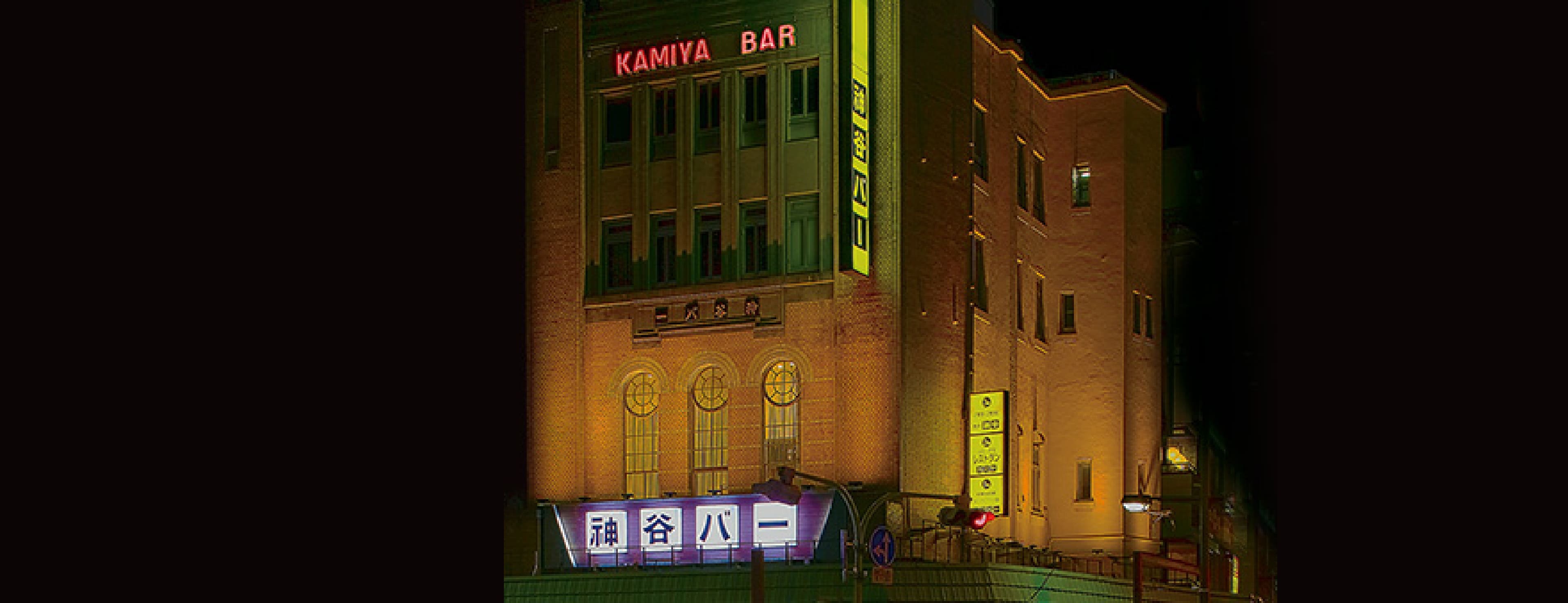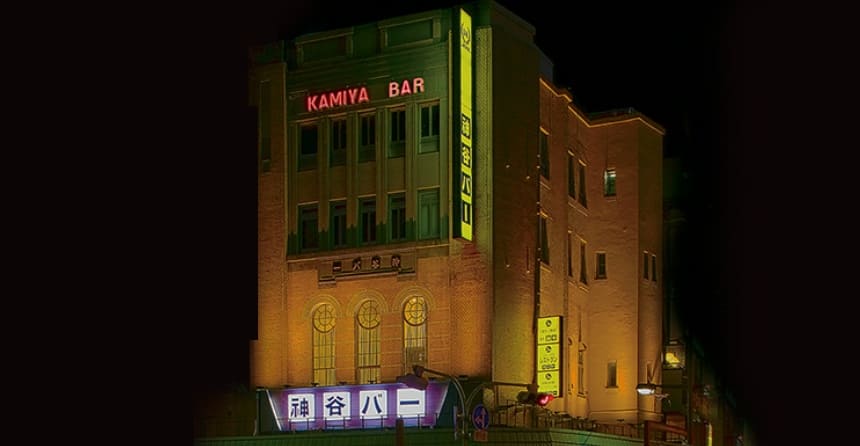Connecting Hearts Through
Tradition and Warmth
– Kamiya Bar
Store Information
1F Welcome to “Kamiya Bar”
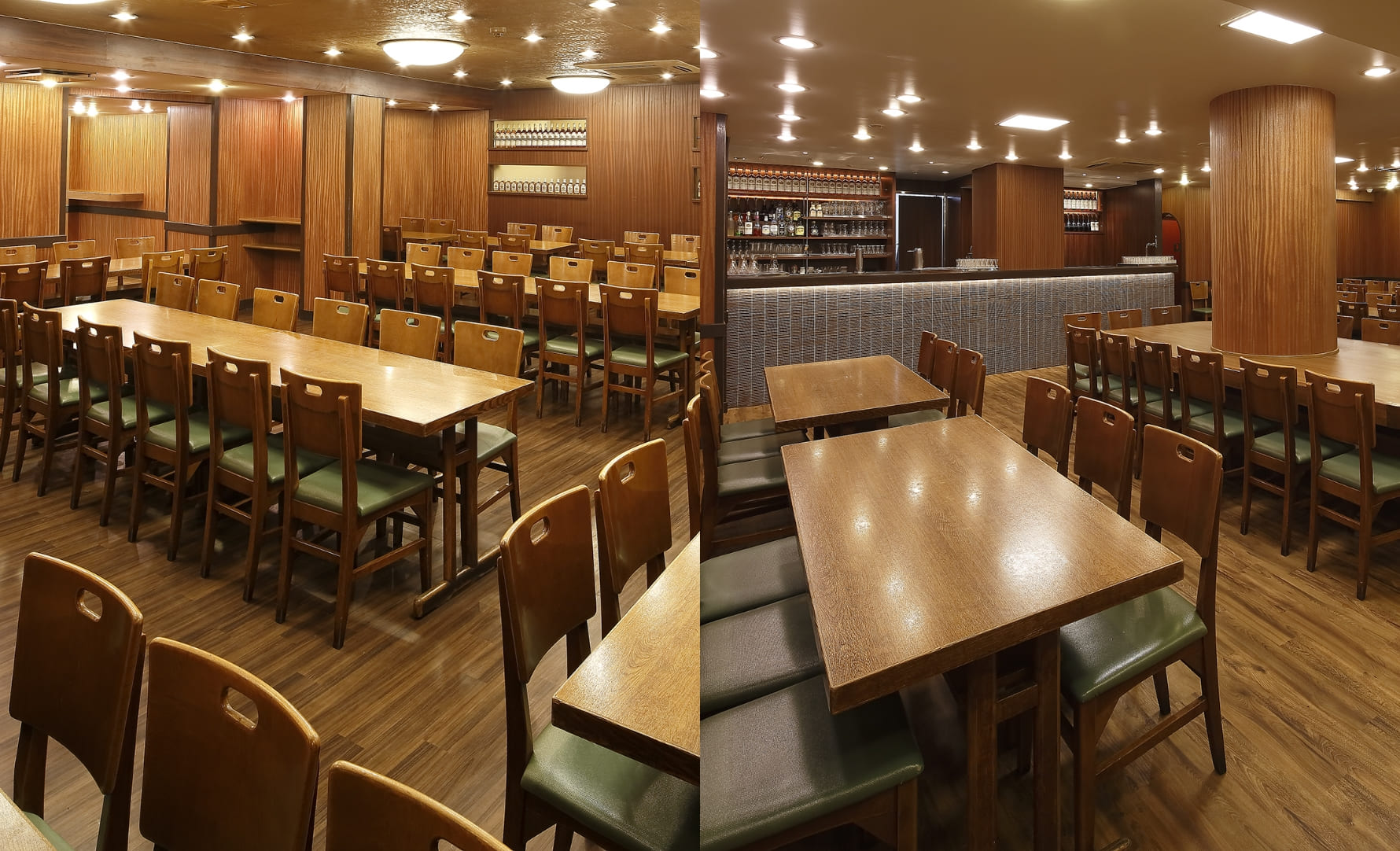
Perfect for those who appreciate fine drinks and wish to immerse themselves in the nostalgic allure of Tokyo’s historic shitamachi district. Savor the crisp, perfectly chilled Denki Bran, the velvety bubbles of draft beer, and a diverse array of appetizers and dishes. Whether alone or with company, everyone is welcome to experience its warmth.(Tickets are available for purchase at the entrance.)
All seating is non-smoking.
A smoking room is available.
2F Welcome to “Restaurant Kamiya”
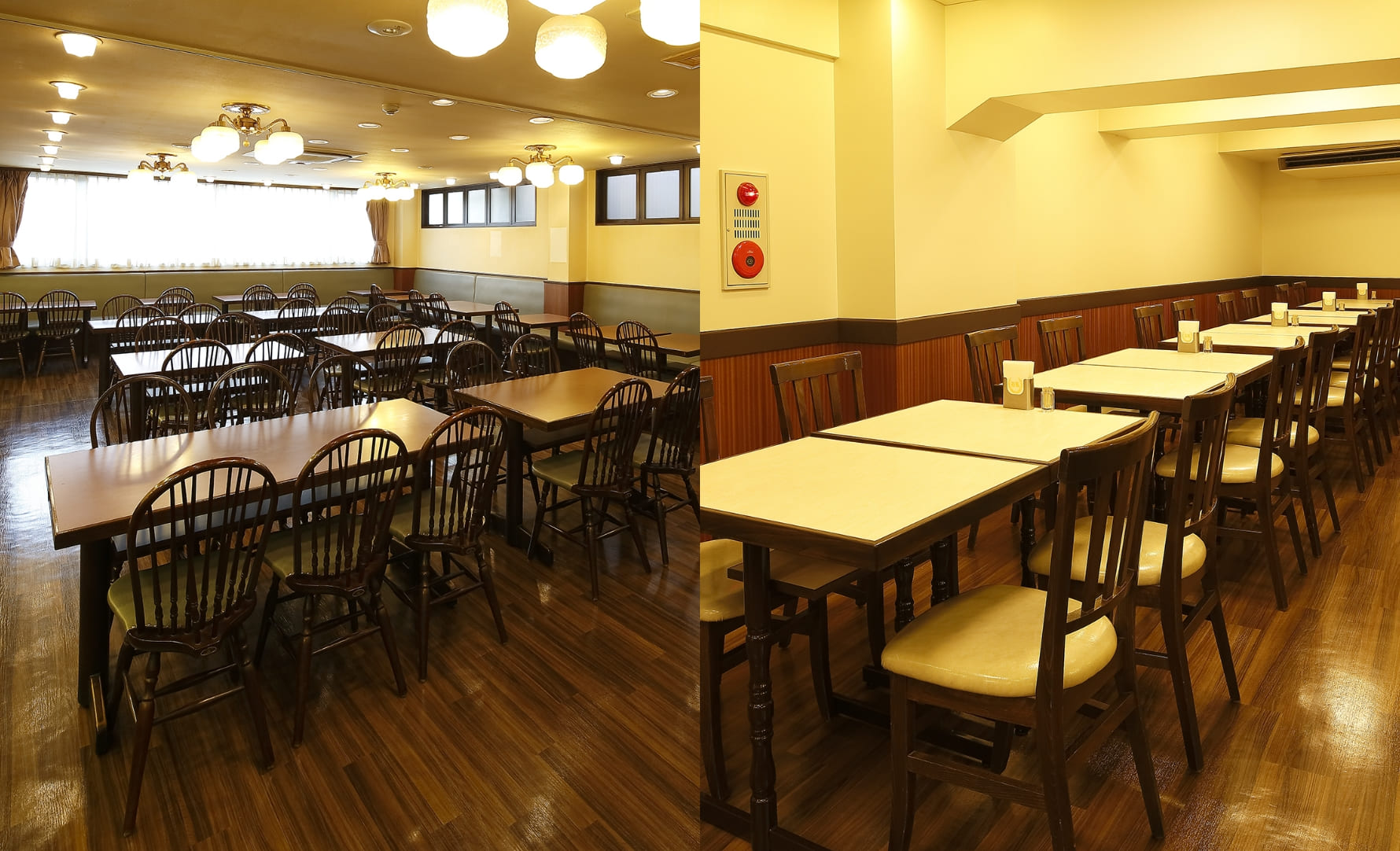
Perfect for family meals or group dining. In addition to Denki Bran and draft beer, indulge in homemade Western-style dishes and desserts. The venue is also ideal for a variety of gatherings and celebrations.All seating is non-smoking.
A smoking room is available.
Welcome to “Kamiya Bar Shop”

Facing Kaminarimon Street, the “Kamiya Bar Shop” offers original products such as Denki Bran and Kamiya Wine.Business Hours: 10:00–17:30 (Closed on Tuesdays)
What is Denki Bran?
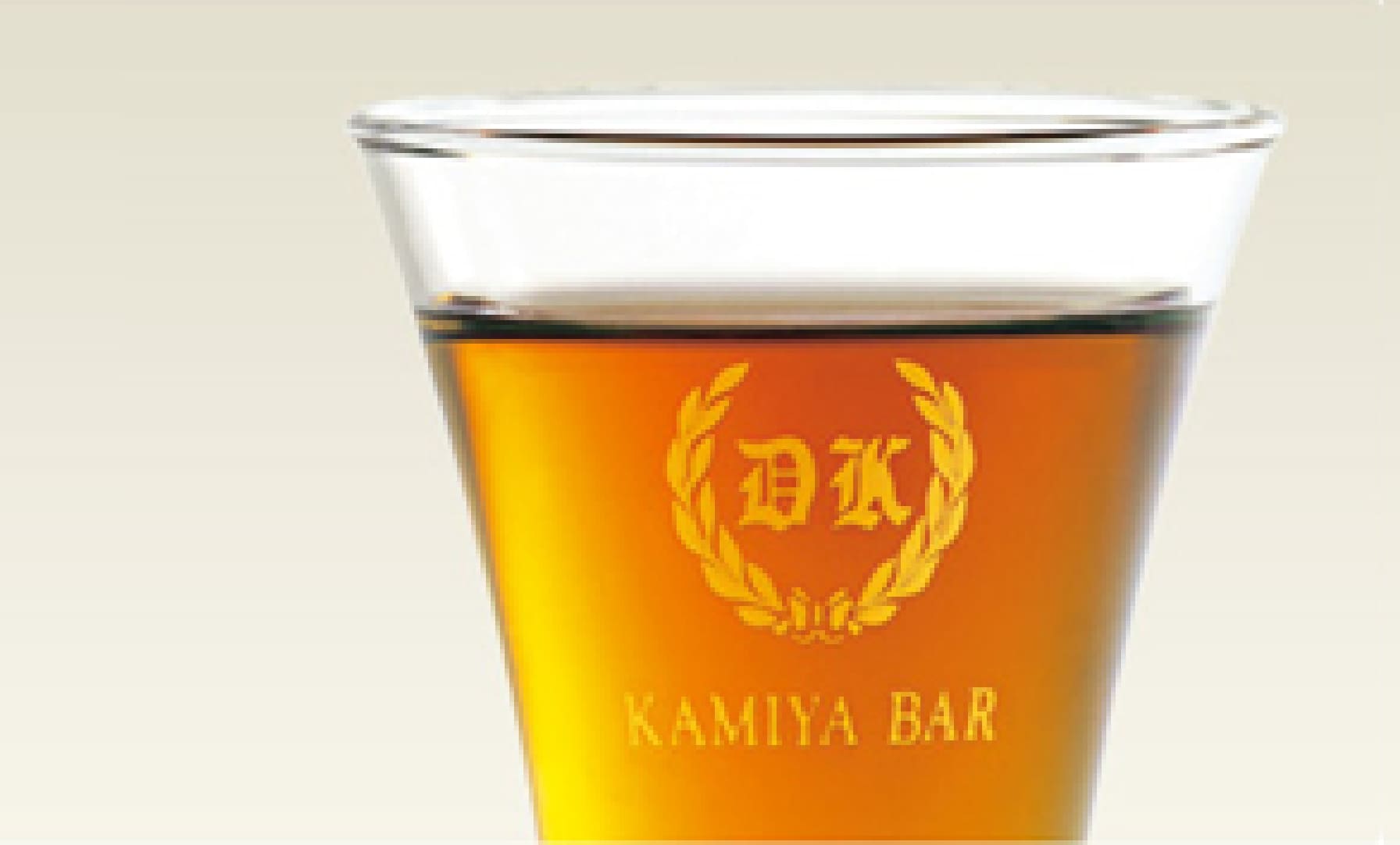
An iconic cocktail created in 1882 by founder, Denbei Kamiya, embodying the romantic and nostalgic essence of Asakusa.
Denki Bran: Past and Present
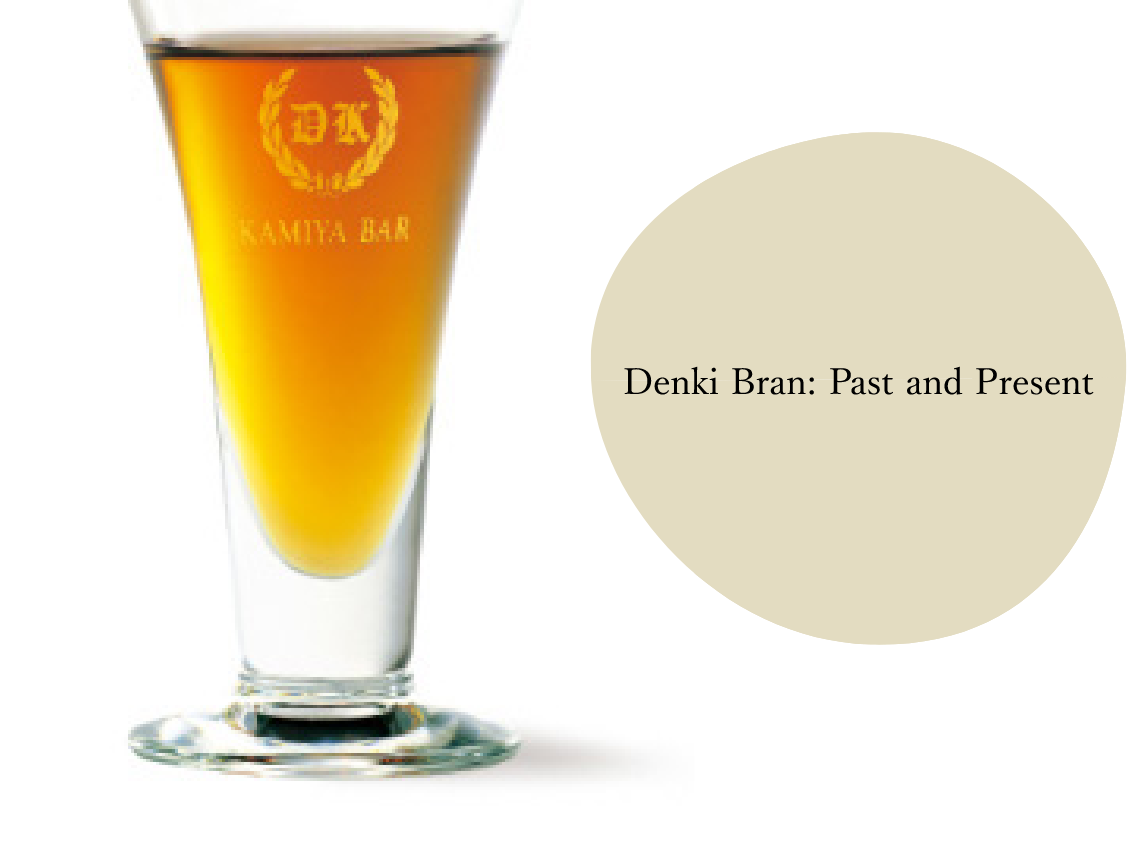
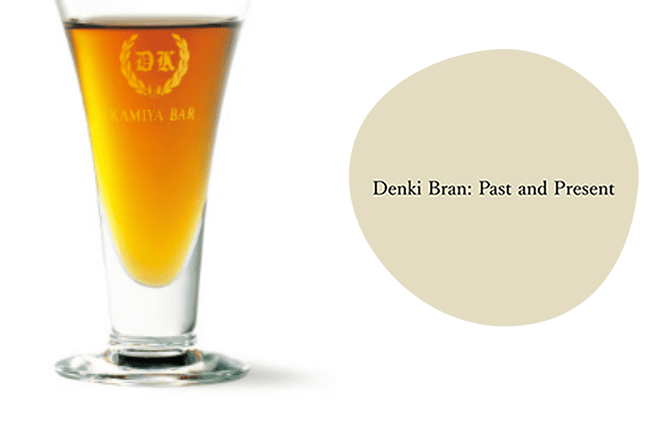
For nearly 150 years, the cocktail known as Denki Bran has graced
Kamiya Bar, quietly witnessing the ebb and flow of life in Asakusa and beyond.
Sometimes tucked into the corner of a bar, sometimes resting in the palm of someone’s hand—
Back in the Meiji era (1868-1912), when electricity was a novelty, anything modern and innovative was often prefixed with “electric” (denki) to signify its sophistication.
With an alcohol content of 45%, Denki Bran—potent and novel—perfectly captured that electrifying spirit. The “Bran” in Denki Bran refers to the brandy used as its base. The cocktail also includes a blend of gin, wine, curaçao, and select herbs, though its exact recipe remains a well-guarded secret.
Its warm amber hue and subtle sweetness have made it immensely popular since its inception. The current Denki Bran has an alcohol content of 30%, while the Denki Bran <Old> has an alcohol content of 40%.
During the Taisho era (1912-1926), it was the ultimate pleasure for the common people to enjoy a glass or two of Denki Bran, priced at 10 sen (a fraction of a yen at the time), after watching a silent film in Asakusa’s Rokku district (entertainment center of the area), their excitement still lingering.
Even today, Kamiya Bar remains a beloved social hub in the Shitamachi district (Tokyo’s old downtown area). Groups of friends, office workers, and even young women gather to laugh, chat, and unwind with small glasses in hand, and fully savor the end of their day. It’s a heartwarming scene of camaraderie that transcends the passage of time.
Meiji, Taisho, Showa, Heisei, and now Reiwa—though the eras have changed, Denki Bran continues to live on in people’s hearts. It embodies the spirit of Asakusa’s rich, colorful life. With each sip, it feels as if time begins to flow backward, and one can almost hear echoes of forgotten conversations and glimpse the faces of those who lived in times gone by.
Denki Bran in Literature
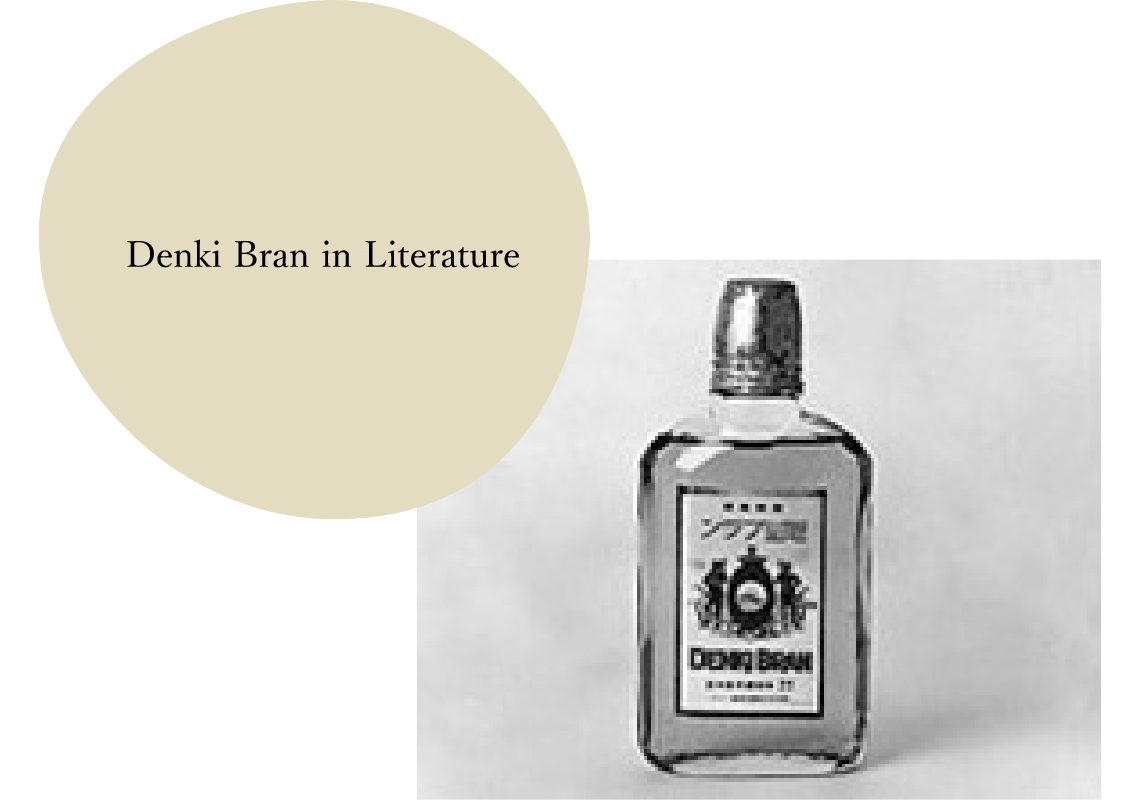
Asakusa has a deep connection with literature, inspiring many
iconic works that capture its vibrancy and warm sense of
community. For instance, Kafu Nagai portrayed poignant human
dramas filled with both beauty and sorrow set along the district
in his novel “The River Sumida.”Later, in the early Showa era,
Yasunari Kawabata chronicled Asakusa’s most glamorous period
in several novels, including “The Scarlet Gang of Asakusa”,
“The Sisters of Asakusa,” and “The Mynah Bird of Asakusa.”
Beyond these works, many other literay greats such as Takuboku Ishikawa, Sakutaro Hagiwara, Jun Takami,
Junichiro Tanizaki, Ango Sakaguchi, and Kazuo Dan were deeply captivated by Asakusa, leaving their marks in one way or another on this storied district.
The sights and sounds of Asakusa often make their way into poetry and novels, and Kamiya Bar is no exception. Its
name occasionally appears in the pages of literature. Since its founding in 1880, Kamiya Bar has always been a “gathering place for the common people,” a space where their joys and sorrows—the very essence of everyday life— played out. Perhaps this is why it has inspired songs and found its way into the stories that have been written.
During his twenties in the early Taisho period, poet Sakutaro Hagiwara penned these poignant lines:
“Alone, I sit drinking.
How pathetic it seems—
What thoughts cross the mind
Of the man beside me?”
(At Kamiya Bar – Sakutaro Hagiwara)
In the lively din of Kamiya Bar, Sakutaro sat alone, quietly sipping the potent Denki Bran (called Denki Brandy at the
time) undoubtedly resonating deeply with his introspective soul.
Decades later, in 1960, Tetsuro Miura’s Akutagawa Prize-winning novel “Shinobu River” also spotlighted Kamiya Bar
and Denki Bran. This tale of young love touched countless hearts and was eventually adapted into a film.
“But since it’s a rare day off, wouldn’t it be better to visit Tochigi?”
In Tochigi lived Shino’s father and her younger siblings.
“Yes… but since it’s a rare day off, I want to do something I usually can’t. I still want to go to Asakusa.”
— omitted text —
“But do you think Kamiya Bar is still around?”
“Yes, I believe it is. I think I caught a glimpse of it once when I was heading home to Tochigi. Let’s watch a movie,
go to Kamiya Bar, and toast to my achievement today—you with Denki Bran, and me with grape wine.”
This is a scene from “Shinobu River”, a conversation between the protagonist and Shino, who works at the restaurant
“Shinobu River.” Both burdened by their own sorrows, they share an exhilarating moment as they plan their first
date. If Shino’s cheeks had turned a rosy hue that day, it could hardly have been only the wine at Kamiya Bar.
A Timeline of Denki Bran’s Pricing

Price Shifts of a Glass of Denki Bran
- 1910(Meiji 43)7sen
- 1924(Taisho 13)8sen
- 1926(Showa 1)12sen
- 1949(Showa 24)50yen
- 1950(Showa 25)45yen
- 1951(Showa 26)47yen
- 1952(Showa 27)50yen
- 1969(Showa 44)60yen
- 1970(Showa 45)70yen
- 1972(Showa 47)80yen
- 1973(Showa 48)100yen
- 1974(Showa 49)120yen
- 1975(Showa 50)150yen
- 1979(Showa 54)180yen
- 1980(Showa 55)200yen
- 1984(Showa 59)230yen
- 1991(Heisei 3)250yen
- 1997(Heisei 9)260yen
(1sen= 1/100th of a yen)
The History of Kamiya Bar
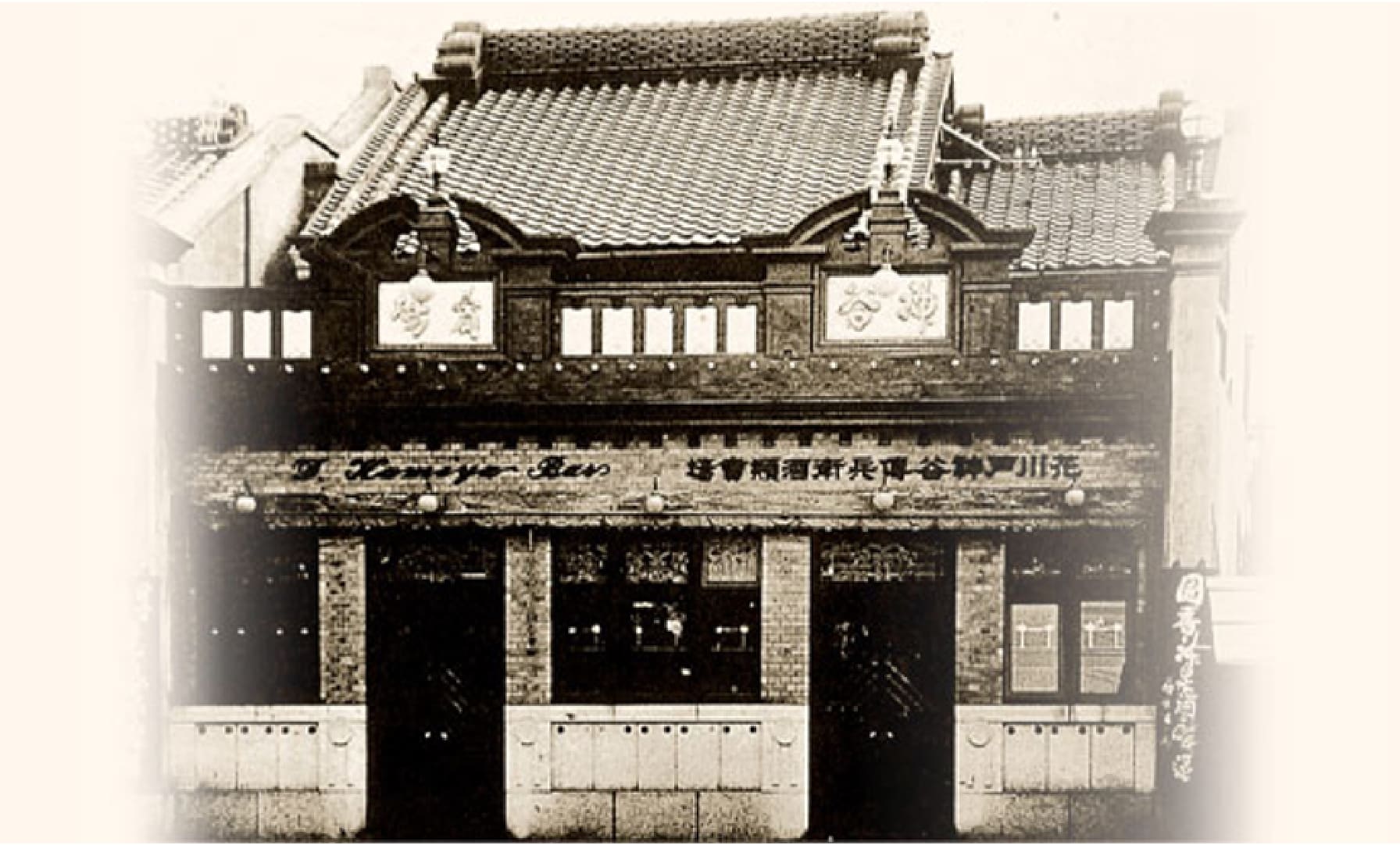
Founded in 1880 at Asakusa 1-chome 1-banchi, Kamiya Bar holds the distinction of being Japan’s first bar, cherished by generations of literary icons and beloved for its timeless atmosphere.
History

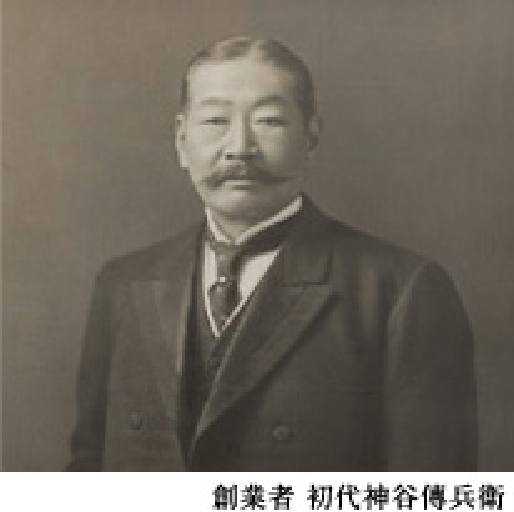 Founder: Denbei Kamiya
Founder: Denbei Kamiya
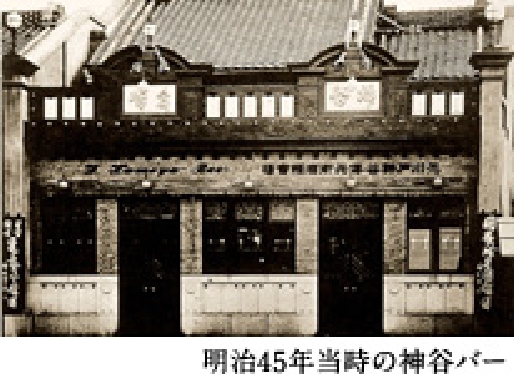 Kamiya Bar in 1912
Kamiya Bar in 1912
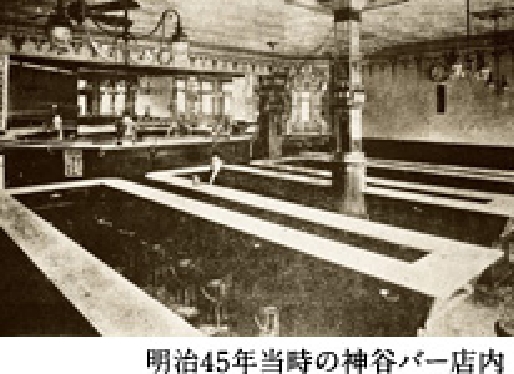 Inside Kamiya Bar, 1912
Inside Kamiya Bar, 1912
April 1880 (Meiji 13)
Founder Denbei Kamiya opens “Mikawaya Meishuten (Mikawaya
Liquor Store)” at 4 Hanakawado-machi, Asakusa Ward, and begins
selling sake by the glass.
1881 (Meiji 14)
Starts reprocessing and selling imported wine.
1882 (Meiji 15)
Begins production and sale of a rapid-matured brandy, which
later became known as Denki Bran.
April 10, 1912 (Meiji 45)
Renovates the interior of the shop in a Western style and
renames it “Kamiya Bar.”
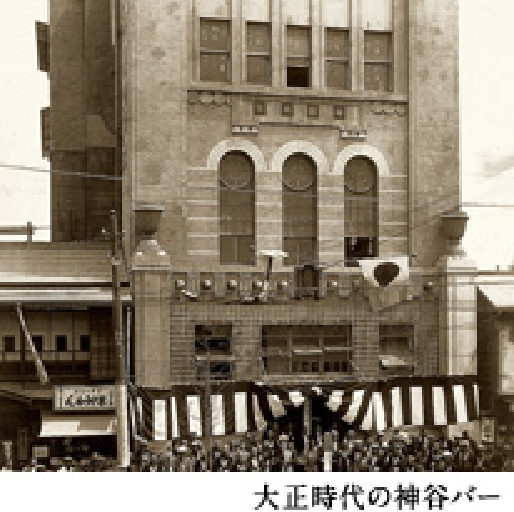 Kamiya Bar in the
Kamiya Bar in theTaisho Era
1921 (Taisho 10)
The Kamiya Building (the current structure) is completed.
March 1, 1949 (Showa 24)
Establishes Kamiya Sakaba Co., Ltd.
1960 (Showa 35)
Launches operations for its Western-style cuisine department.
February 24, 1963 (Showa 38)
Renames the company to Kamiya Shoji Co., Ltd.
May 21, 1970 (Showa 45)
Opens a Kappo (Japanese-style dining establishment) on the third floor.
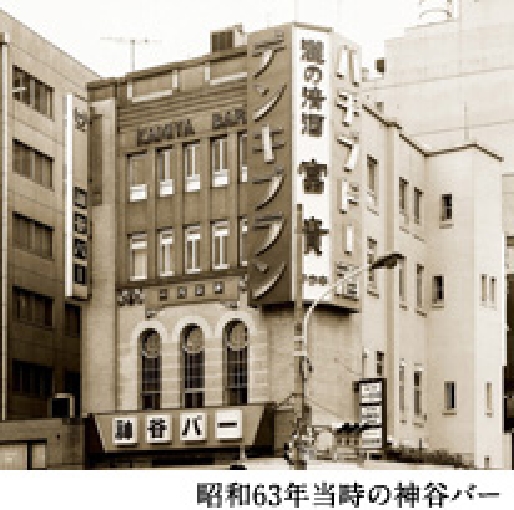 Kamiya Bar in 1988
Kamiya Bar in 1988
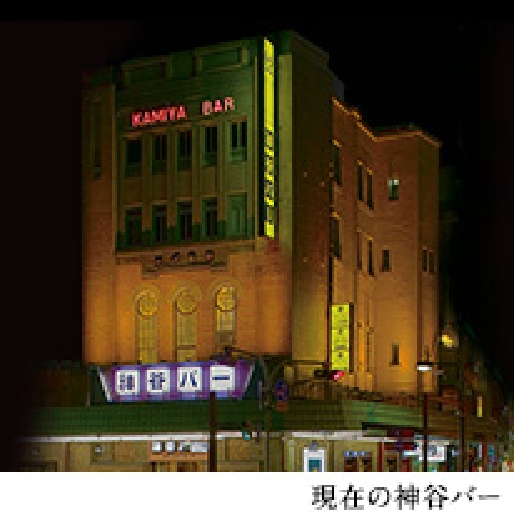 Kamiya Bar, Present Day
Kamiya Bar, Present Day
May 14, 1980 (Showa 55)
Constructs a new annex.
February 23, 2004 (Heisei 16)
Opens the Kamiya Bar Shop on the first floor.
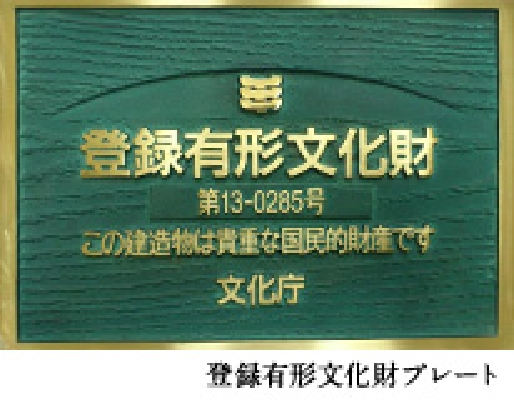 Registered Tangible
Registered Tangible Cultural Property Plaque
October 28, 2011 (Heisei 23)
Kamiya Building Main Hall is officially designated as a Registered Tangible Cultural Property.
December 2013 (Heisei 25)
Completes seismic retrofitting work.
Business Calendar
Closing DaysAsakusa Events※Please note that Asakusa event schedules may change.
Closed: Tuesdays and two Mondays per month
Hours: 11:00–20:00 (Last Order: 19:30)
Credit Cards: Accepted (except on 1F Kamiya Bar)
Debit Cards: Not accepted
Our social media posts are in Japanese only.
Access & Transportation
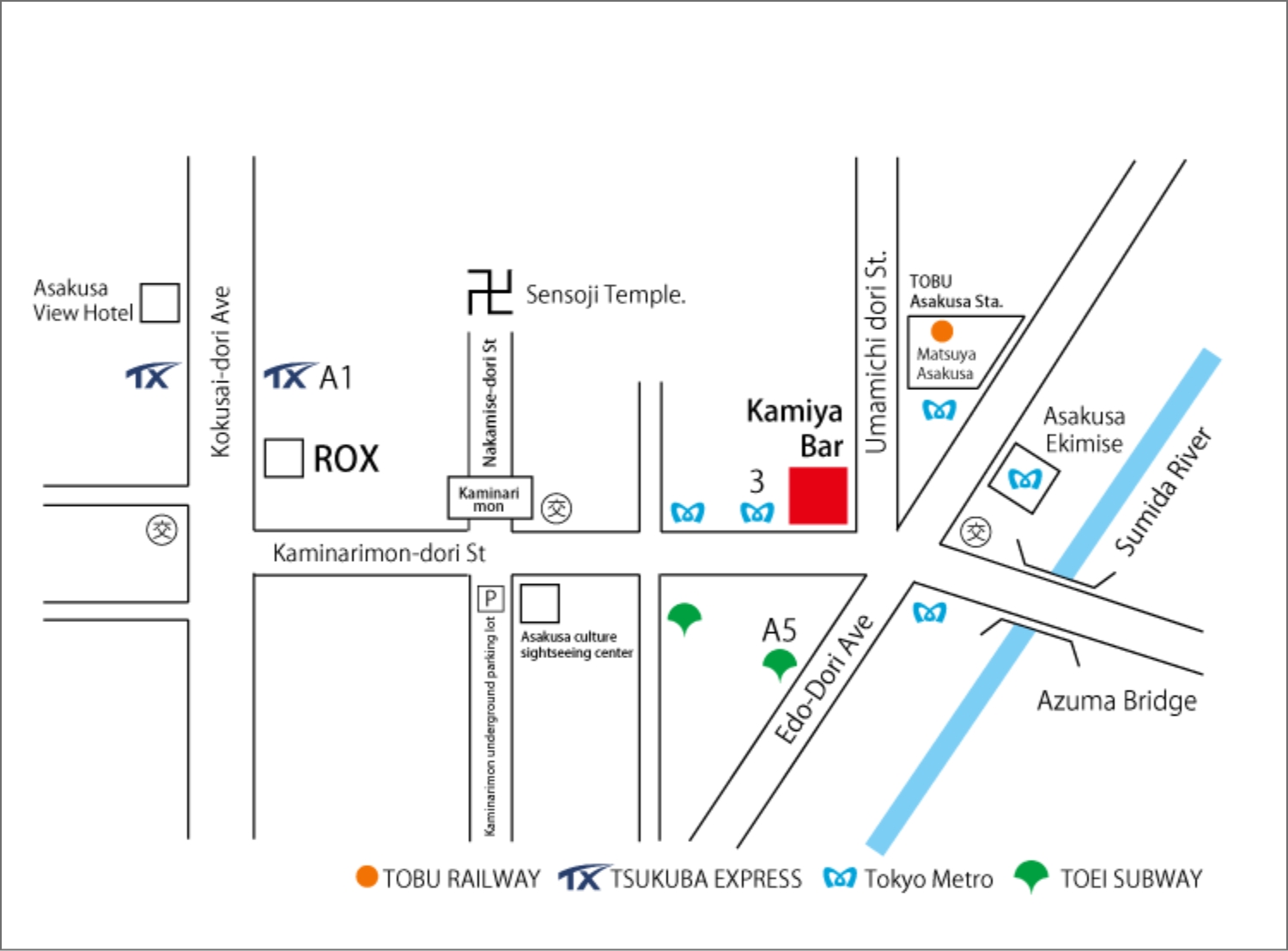
- ・Tokyo Metro Ginza Line: 1–2 min walk from Exit 3 of Asakusa Station
- ・Toei Asakusa Line: 1–2 min walk from Exit A5 of Asakusa Station
- ・TOBU SKYTREE Line: 1–2 min walk from the Main Exit of Asakusa Station
- ・Tsukuba Express: Approx. 10 min walk from Exit A1 of Asakusa Station
Address: 1-1-1 Asakusa, Taito-ku, Tokyo, 111-0032

